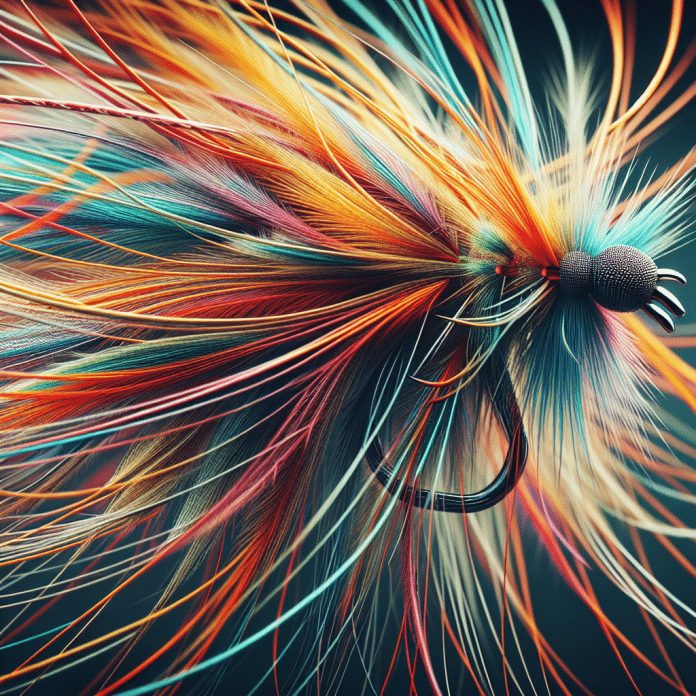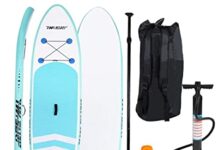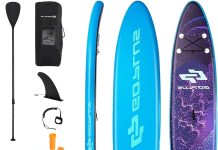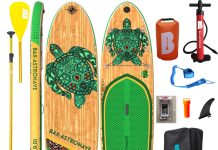Are you craving a new outdoor adventure? Look no further than the captivating world of fly fishing. In this article, we will take you on a journey to discover the art of fly fishing. Whether you are a beginner eager to learn the basics or an experienced angler looking to refine your skills, we’ve got you covered. Get ready to immerse yourself in the serene beauty of nature, master the intricate art of casting, and reel in the satisfaction of a well-earned catch. Let us be your trusted guide as we explore the enchanting world of fly fishing together.
Review contents
The Basics of Fly Fishing
Understanding Fly Fishing
Fly fishing is a popular and captivating angling method that employs specialized techniques and gear to catch fish. Unlike traditional fishing, which uses bait or lures, fly fishing relies on the use of artificial flies that imitate various insects and creatures found in the water. This unique approach is not only effective in attracting fish, but it also requires a great deal of skill and craftsmanship. Fly fishing is not just a means of catching fish; it is an art form that allows us to connect with nature and enjoy the beauty of the outdoors.
Equipment and Gear
To engage in fly fishing, it is important to have the right equipment and gear. The essentials include a fly rod, fly reel, fly line, and leaders and tippets. Fly rods come in different lengths and weights, each designed for specific fishing conditions. The fly reel is responsible for holding and releasing the fly line, which is where the fly is attached. Leaders and tippets are thin, transparent lines that are tied to the end of the fly line and serve to attach the fly. Additionally, other accessories such as waders, boots, and a fly fishing vest can enhance the overall experience and make fishing more comfortable.
Casting Techniques
One of the fundamental skills in fly fishing is mastering various casting techniques. Casting is the act of propelling the fly line, and consequently, the fly, to the desired location on the water. There are different methods of casting, such as the standard forward cast, roll cast, and the more advanced double haul cast. Each casting technique requires proper timing, coordination, and practice to achieve accuracy and distance. Additionally, learning how to mend the line, or manipulate it on the water to achieve a natural drift, is crucial for successful fly fishing.
Choosing the Right Fly
Types of Flies
Flies come in a wide array of types and designs, each specifically crafted to imitate different prey items found in the water. The most common types of flies include dry flies, nymphs, and streamers. Dry flies are designed to float on the water’s surface and imitate insects such as mayflies or caddisflies. Nymphs, on the other hand, imitate aquatic insects in their nymphal stage, usually below the water’s surface. Streamers are larger flies that imitate small fish or other prey items. By understanding the behavior of the fish and the prevalent food sources in the water, anglers can choose the appropriate type of fly to entice their target species.
Matching Flies to the Water
Matching flies to the water is a crucial aspect of fly fishing. The first step is to observe the surroundings and take note of any insects or creatures present. By understanding the fish’s behavior and feeding habits, anglers can choose a fly that closely resembles the natural prey items in the water. Factors such as size, color, and movement of the fly can make a significant difference in attracting fish. For instance, during a mayfly hatch, using a mayfly imitation in the appropriate size and color can result in more successful catches. It is essential to keep a variety of flies in different patterns and sizes to adapt to changing conditions.
Learning to Tie Flies
For many fly anglers, tying their own flies adds a sense of creativity and personalization to their fishing experience. Tying flies allows anglers to create customized imitations tailored to their specific fishing locations and target species. Learning to tie flies can be an enjoyable and rewarding endeavor. By understanding basic fly tying techniques and investing in the necessary tools and materials, anglers can create flies that closely resemble the natural insects and creatures found in the waters they fish. Tying flies not only enhances the angler’s skills but also adds a unique touch to their fly fishing adventures.
Understanding Fish Behavior
Fish Species and Habitats
To effectively catch fish, it is essential to have a good understanding of the behavior and habitats of the target species. Different fish species have distinctive preferences in terms of where they reside and the type of water they prefer. Some fish, such as trout, are often found in cold, clear rivers and streams, while others, like bass, thrive in warmer water bodies such as lakes and ponds. By researching and familiarizing ourselves with the characteristics of various fish species, we can improve our chances of success and tailor our fishing techniques accordingly.
Reading the Water
Reading the water is a skill that allows fly anglers to identify potential fish-holding areas. By observing and interpreting the movements and patterns of the water’s surface, anglers can gain valuable insights into the underwater environment. This includes recognizing structures such as riffles, pools, and eddies, which often serve as prime locations for fish to feed and seek shelter. Additionally, understanding how currents and flows impact the behavior of fish can help anglers strategize their fishing approach and target specific areas with confidence.
Studying Insect Life
A critical aspect of understanding fish behavior in fly fishing is studying insect life. Insects form a significant part of a fish’s diet, and being able to identify these natural food sources can greatly enhance our chances of success. By observing the different insect hatches, anglers can determine which flies to use and when to use them. Becoming familiar with the life cycles, behavior, and habitat preferences of insects such as mayflies, caddisflies, and stoneflies can provide valuable insights into the feeding behavior of fish. Studying insect life is a continuous learning process that requires observation, research, and staying up-to-date with aquatic entomology.
Fly Fishing Techniques
Dry Fly Fishing
Dry fly fishing is often considered the epitome of fly fishing. This technique involves casting a floating fly to fish that are actively feeding on insects at or near the water’s surface. The aim is to present the fly in a natural manner, imitating the behavior of an insect floating on the water. Dry fly fishing requires finesse and careful observation to match the hatch and accurately present the fly to the fish. It offers an exciting and visually captivating experience, as anglers can witness the fish rise to the surface to take the fly.
Nymph Fishing
Nymph fishing is a technique that involves presenting a subsurface fly, known as a nymph, to fish feeding below the water’s surface. Nymphs imitate the juvenile stages of aquatic insects, which are often the primary food source for fish. This method requires the angler to monitor the drift of the nymph by maintaining tension on the line and detecting subtle strikes. Nymph fishing can be highly effective, especially in situations where fish are not actively rising to surface insects. It requires attention to detail and a good understanding of the underwater environment.
Streamers and Wet Flies
Streamers and wet flies are larger flies that imitate baitfish or other swimming creatures. This technique involves casting the fly and allowing it to sink and move through the water column. By using various retrieval methods, such as stripping or swinging the fly, anglers can imitate the movement of prey and trigger predatory instincts in fish. Streamer fishing is often associated with targeting larger fish species, such as trout or bass, and can be an exhilarating experience. It requires an understanding of the fish’s behavior and the ability to accurately mimic the movement of natural prey.
Fly Fishing in Different Environments
Fishing in Rivers and Streams
Rivers and streams provide excellent opportunities for fly fishing. These dynamic and flowing water bodies are naturally inhabited by various fish species, including trout, salmon, and bass. When fishing in rivers and streams, it is important to consider factors such as water flow, depth, and structure. By identifying productive areas such as riffles or pools and understanding how fish position themselves in different currents, anglers can effectively target fish in these environments. Successful river and stream fishing often involve accurate casting, proper presentation, and adaptability to changing conditions.
Fishing in Lakes
Fly fishing in lakes can present anglers with different challenges and opportunities. Lakes offer a vast expanse of water, requiring anglers to cover more area to find fish. Understanding the structure of the lake, such as drop-offs, weed beds, or submerged structures, can help locate fish-holding areas. Fly fishing in lakes often involves presenting flies in deeper water using techniques such as trolling, casting, or using a float tube or boat. Additionally, paying attention to wind direction, temperature changes, and the movement of aquatic insects can significantly improve the chances of success.
Saltwater Fly Fishing
Saltwater fly fishing is a thrilling and highly specialized form of fly fishing. It allows anglers to target a wide range of species, including bonefish, tarpon, and striped bass, in coastal and offshore waters. Saltwater fishing presents unique challenges due to the size and power of the fish, as well as the various environmental factors involved. Proper equipment, such as saltwater-specific fly rods and reels, along with sturdy leaders and tippets, are necessary to withstand the harsh saltwater conditions. Saltwater fly fishing requires accurate casts, fast retrieves, and a keen eye for spotting fish in often challenging and vast saltwater environments.
Practicing Catch and Release
Handling Fish Properly
Practicing catch and release is a responsible approach to fly fishing that helps preserve fish populations and their habitats. When catching fish, it is crucial to handle them with care to minimize stress and potential harm. Wetting hands before handling fish can protect their delicate slime coating. Supporting the fish gently and avoiding excessive squeezing or dropping is important. It is also advisable to avoid touching the gills, as this can cause significant damage. By handling fish properly, we can ensure their well-being and increase their chances of survival after release.
Removing Hooks Safely
To safely release fish, it is necessary to remove the hooks efficiently and without causing further harm. Using proper tools, such as hemostats or forceps, can aid in gently removing hooks while minimizing handling time. In some cases, when the hook is deeply embedded, it may be better to trim the line close to the hook rather than risk injury to the fish. Anglers should always be mindful of the fish’s well-being and take the necessary precautions to avoid unnecessary harm during the hook removal process.
Releasing Fish with Care
When releasing fish, it is vital to ensure they have the best chance of survival. This includes carefully supporting the fish in the water until they regain their strength. Allowing the fish to swim away on their own, without forcefully throwing or tossing them, promotes their recovery. It is also advisable to keep the fish in the water as much as possible during the release process, minimizing the time they spend out of their natural environment. By releasing fish with care and mindfulness, we can contribute to the sustainability of fish populations and protect the ecosystems they inhabit.
Fly Fishing Knots and Rigging
Basic Knots
Knowing how to tie various knots is essential in fly fishing. Some of the basic knots used include the clinch knot for attaching the fly to the tippet, the improved clinch knot for securing the tippet to the leader, and the surgeon’s knot for joining two pieces of leader material together. These knots provide strength and reliability, ensuring that the connection points between fly line, leader, and tippet remain secure during casting and fighting fish.
Leader and Tippet Setup
Setting up the leader and tippet is a crucial part of the rigging process in fly fishing. The leader is the tapered section that attaches to the fly line and provides a smooth transition between the fly line and the tippet. The tippet is the thinner, transparent line that is attached to the leader and serves as the connection point between the fly and the leader. By properly setting up the leader and tippet, anglers can effectively transfer the energy and motion generated during the cast to the fly, resulting in more accurate presentations and better overall performance.
Rigging for Specific Techniques
Different fly fishing techniques may require specific rigging setups. For instance, nymph fishing often involves using a strike indicator to detect subtle strikes, while dry fly fishing typically utilizes a longer leader for delicate presentations. Streamer fishing may require the use of additional weight or sinking leader to achieve the desired depth. By understanding the techniques and their requirements, anglers can customize their rigging setups to optimize their success in different fishing situations.
Essential Fly Fishing Skills
Casting Accuracy
Casting accuracy is a vital skill in fly fishing that determines the angler’s ability to place the fly accurately and delicately on the water. By consistently hitting the target area, anglers can increase their chances of enticing fish and achieving successful presentations. Practicing casting accuracy involves honing skills such as timing, proper grip, and controlled arm and wrist movements. With patience and practice, anglers can develop the muscle memory and proficiency required for accurate and precise casting.
Line Control
Line control is an essential skill for manipulating the fly line to achieve the desired presentation. By effectively mending the line on the water, anglers can counteract the effects of currents and achieve a natural drift. Line control also includes managing slack line, minimizing drag, and maintaining control over the fly during retrieves. Developing a strong understanding of line control allows fly anglers to adapt to various conditions and maximize the effectiveness of their presentations.
Presentation Techniques
Presentation techniques in fly fishing involve manipulating the fly line, leader, and fly to imitate the natural movement and behavior of aquatic insects. This includes techniques such as dead drift, where the fly drifts naturally with the current, and skittering, where the fly is moved erratically on the water’s surface. By mastering different presentation techniques, anglers can effectively mimic prey behavior and trigger strikes from fish. Each technique requires a subtle combination of casting, line control, and timing to create convincing imitations.
Fly Fishing Safety
Safety Precautions
As with any outdoor activity, safety should be a top priority in fly fishing. Anglers should be aware of their surroundings and potential hazards. Wearing appropriate personal flotation devices (PFDs) when fishing from boats or wading in deep water is essential. It is crucial to assess the stability of the wading area, especially in fast-flowing rivers, to avoid slips and falls. Additionally, using polarized sunglasses can protect eyes from hooks and harmful sun rays while enhancing visibility in the water. Understanding and practicing safety precautions can ensure a safe and enjoyable fly fishing experience.
Wading Techniques
Wading is a common practice in fly fishing, allowing anglers to access prime fishing spots in rivers and streams. Proper wading techniques can prevent accidents and maintain stability in the water. It is essential to use wading boots with felt soles or rubberized traction, providing grip on slippery surfaces. Taking short, deliberate steps and using a walking staff for additional support can help maintain balance. Avoiding deep or fast-flowing water when wading alone is advisable to minimize risks. By practicing safe wading techniques and taking necessary precautions, anglers can enjoy the benefits of fishing in these aquatic environments.
Weather Considerations
Weather conditions play a significant role in fly fishing and can impact the overall experience and safety of anglers. Being aware of weather forecasts and conditions, such as wind speed, changes in temperature, and approaching storms, is essential. Strong winds can make casting difficult, while rapid temperature changes can affect the fish’s feeding behavior. Being prepared with appropriate clothing, such as waterproof jackets or layered clothing for varying conditions, can ensure comfort and protection. Staying informed about weather patterns and adapting fishing plans accordingly contributes to a safe and enjoyable fly fishing outing.
Fly Fishing Etiquette
Respecting Other Anglers
Respecting fellow anglers is an important aspect of fly fishing etiquette. It is essential to give other anglers adequate space and avoid casting over their lines or encroaching on their fishing spots. Being considerate of other people’s fishing experience by keeping noise levels down and maintaining a peaceful atmosphere contributes to a positive environment. Sharing knowledge and experiences in a friendly and helpful manner can foster a sense of community among fly anglers and make the angling experience more enjoyable for everyone involved.
Streamside Etiquette
Practicing good streamside etiquette helps protect the fragile ecosystems and natural beauty of fishing locations. It is important to avoid trampling on vegetation and disturbing streamside habitats. Properly disposing of waste, such as fishing line and other debris, is essential to prevent harmful impacts on wildlife. Additionally, using barbless hooks or crimping down barbs can reduce fish injuries and make hook removal easier during catch and release. By adhering to streamside etiquette principles, fly anglers can ensure their actions have minimal impact on the environment and promote the sustainability of fishing locations.
Leave No Trace Principles
Adhering to the Leave No Trace principles is crucial for responsible fly fishing. These principles include leaving natural and cultural features undisturbed, disposing of waste properly, minimizing campfire impacts, and respecting wildlife. By following these principles, fly anglers can minimize their environmental impact and preserve the wild and pristine qualities of the natural areas they fish. Taking only memories and leaving behind no trace helps ensure that future generations can also enjoy the wonders of fly fishing in untouched and thriving ecosystems.
In conclusion, fly fishing is a captivating and rewarding pursuit that requires both skill and knowledge. By understanding the basics of fly fishing, choosing the right flies, studying fish behavior, and mastering various techniques, anglers can immerse themselves in the art of fly fishing. It is crucial to prioritize responsible practices such as catch and release, employing safe methods, respecting others, and following environmental principles. Fly fishing is not just about catching fish; it is about building a connection with nature, experiencing the outdoors, and preserving the environments that provide us with unforgettable fly fishing adventures.

































